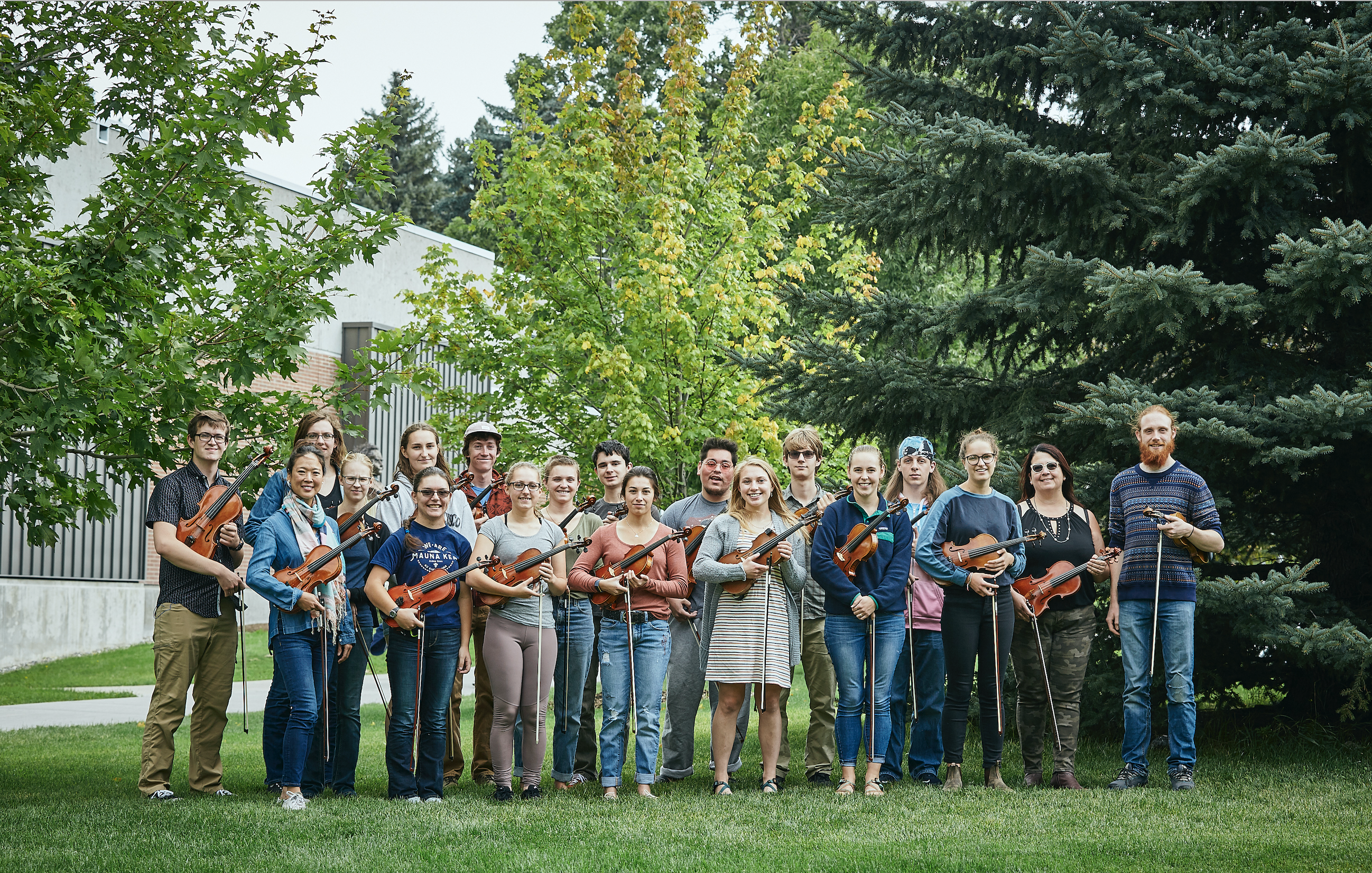Applied Music/Individual Lessons

At Montana State University, Music Majors, Music Minors, and students majoring across campus can take individual lessons, called Applied Music. The School of Music faculty members teach over 150 students from 40+ different degree programs on a variety of instruments/voice. Students enrolling in Applied Music are also required to enroll in a large designated ensemble. In Applied Music, students have a one on one lesson with faculty members and attend a weekly group studio class. During a one on one lesson, students study solo works or excerpts for their instrument/voice as well as perfecting scales and other important techniques. In the weekly studio class, students perform and study with other students learning the same instrument/voice. Studio classes focus on performing in a chamber setting and allow students to meet and collaborate.
When enrolled in Applied Music, students have access to Howard Hall 24/7, which is equipped with practice rooms. Practice rooms are furnished with a piano, and select practice rooms have a computer or percussion instruments.
Instruments are available for students enrolled in Applied Music to use at no cost. Depending on size, a limited number of lockers are available for students bringing their personal instruments.
All applied studios require an audition/interview before a student may enroll in Applied Music. The audition/interview generally takes place before or during the first week of classes. In most cases, if a student has auditioned and received a scholarship on an instrument, the scholarhsip audition is considered their studio audition, and the requirement is waived. Please contact the appropriate applied faculty listed below to schedule a studio audition. Audition requirements are for each instrument are listed below.
Applied Faculty and Studio Audition Requirements by Area
For questions regarding applied music and audition repertoire, please contact the appropriate School of Music faculty member listed below.
Woodwinds
- Two-octave major scales in instrument keys of E & A flat in 8th notes at 120 bpm. (oboe only one octave of A flat required)
- Full range chromatic scale in quarter notes at 144 bpm
- Two solos or etudes in contrasting styles of length 2-4 minutes each
Brass
- Two-octave major scales in instrument keys of E & A flat in 8th notes at 120 bpm.
- Full range chromatic scale in quarter notes at 144 bpm
- Two solos or etudes in contrasting styles of length 2-4 minutes each
Percussion
- Snares: published solo (rudimental or orchestral)
- Keyboard: 2 or 4 mallet published solo
- Timpani: published solo that best demonstrates your ability on technique and tuning
- Drumset: demonstrate various styles, as well as chart reading and soloing
Piano, Guitar, and Harp
- Guitar: Two contrasting pieces or movements from the solo classical repertoire
- Piano: Two solos in contrasting styles
- Piano: D major & d harmonic minor - minimum 2 octaves, hands together ascending and descending
- Harp: Two solos in contrasting style
Laptop/Technology Instruments
- A prepared piece of your choice demonstrating your performance skill on your setup - computer, synthesizer, controller, etc. This could be an original composition or an arrangement of someone else's work. The performance should highlight how you use your equipment, reflect your live performance skills, and demonstrate your overall musicality and creativity.
- An interpretation, performed on your setup of one of the following compositions: piece #1, piece #2, or piece #3.
- The goal is to interpret the chosen piece rather than perform it exactly as notated. Ex: you are not required to sing, but you could!
- Your adaptation can be literal. Ex: you might play the piano part and melody live with a synthesizer.
- Alternatively, you can take a more abstract approach by downloading a version of the piece from YouTube, then remixing it by chopping it up, adding beats, bass lines, or other elements to create a new arrangement.
- You are also encouraged to experiment with sound by processing or altering the audio in interesting ways.
- Regardless of the method you choose, ensure that live performance is central to your performance.
Voice
- Two contrasting songs with piano or recorded accompaniment. Memorization and professional attire are strongly encouraged.
- Auditions must be video recorded and accessible by direct link. Submit video links to jharney@montana.edu for consideration in a voice studio. Auditions will be reviewed as they are received.
Strings
- Two 3-octave scales; one major, one minor (Basses please prepare 2-octave scales)
- Two contrasting works
- One movement of an unaccompanied solo or etude
- One movement from the standard concerto or sonata repertoire
